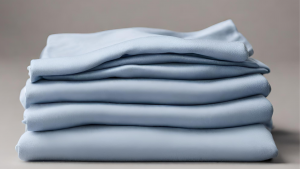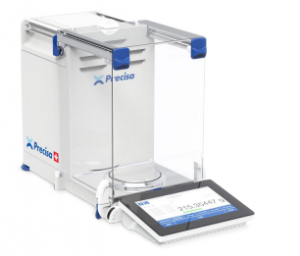Why is it important to keep your balance clean?
Keeping your balance clean within the laboratory isn’t always a top priority – in a busy environment it can often be overlooked. However, a clean balance is vital to ensure accurate and reliable results, as well as avoiding cross contamination.
This blog will cover why balance cleanliness is important, and offer a step by step guide explaining how to clean your balance.
Key points
- A clean balance is vital to ensure that you receive accurate weighing results, avoid contamination, and minimize operator risk.
- There are different ways to clean your balance which will be applicable depending on individual needs, if there has been a contamination, or how strict your procedure is.
- As a minimum, you should clean your balance at least once a week – but a frequently used balance will require cleaning more often.
- To clean your balance you should disassemble all removable parts and clean either in the dishwasher or with a lint free cloth.
Lint free cloths are used to clean the components of the balance that cannot be put in a dishwasher.
Why should you clean your balance?
You should keep your balance clean to ensure you are consistently getting accurate and reliable weighing results, that aren’t being impacted by other contaminants.
Similar to most other laboratory equipment or household items – balances will get dirty over time, especially if they are frequently used. Cleaning your balance won’t just extend its lifetime, it’s also crucial to reduce the risk of cross contamination, increase operator safety, and ensure you are passing audits.
Cross contamination won’t just impact your weighing result, but will also impact the purity of what you are weighing. For example, say you were making a solvent to use in clinical trials research: you are weighing sodium chloride, but the person before you didn’t properly clean the balance, and some residual unknown powder has contaminated your solvent. Not only will this impact your weighing accuracy, but you are also no longer making a reliable solvent due to the contamination.
Weighing accuracy is vital in all laboratories, and residual sample on the balance can have a significant impact on the weighing accuracy, especially when making precise measurements. Hence, a balance that is not clean can result in consistent inaccuracies, which can significantly impact your process further downstream.
Operator safety is vital in a laboratory, and safety of staff should always be a priority. Cleaning your balance is important not just for accuracy, but also for user safety. If the user before you was weighing toxic substances and there is some residual left, this is now a danger to the next operator if the balance is not cleaned properly.
Audit failure can occur if your balance isn’t cleaned properly, specifically if you are a lab that works towards GxP/CFR and you receive audits to keep to this standard – you could be failed based on the cleanliness of your balance.
What does cleaning your balance mean?
Cleaning your balance means ensuring your balance doesn’t have contaminants, dirt, dust, or spillages.
The easiest way to keep your balance clean is to prevent it from getting dirty, however this can be easier said than done. Practices that you can adopt in your laboratory to prevent your balance from getting dirty includes protecting the balance when not in use, and avoiding touch contamination. Whilst these practices are beneficial, inevitably, your balance will get dirty and require cleaning.
Cleaning your balance can mean different things, and different types of cleaning are applicable depending on the situation.
Cleaning refers to the physical removal of foreign materials such as microorganisms, this is accomplished with water and detergents.
Decontamination of your balance would occur when you believe a contamination has occurred, and removes microorganisms, radioactive substances and hazardous materials.
Disinfection inactivates microorganisms and would normally use chemicals, heat, or ultraviolet.
Sterilization kills all microbial life including spores, sterilization should occur after cleaning a balance
How often should you clean your balance?
The general rule is to clean your balance at least once a week, however you may need to increase this depending on your application.
Various factors impact how often a balance should be cleaned, such as how precise you need your results to be, how often your balance is being used, and how many different materials are being weighed. For example, if you are weighing the same powdered material every day, you don’t need to be as concerned about cross contamination – but residual powder can still lie on the balance, which can affect weighing accuracy. Furthermore, the more stray powder there is, the more likely some may accidently fall into the weighing cell, if this occurs, weighing errors can occur without the user realizing – as you may not be able to see this powder. Hence, regular cleaning of your balance is vital, as you won’t always be able to see the potential errors that can occur.
How to clean your balance
Different balances require different cleaning techniques, and some parts are dish washer safe whereas others need to be cleaned by hand. At Techcomp Lab Products by Precisa, cleaning your balance couldn’t be easier, with many components, including the draft shield, being dish washer safe for the series 390.
Preicsa series 390 balance.
Steps to clean your balance
Throughout the cleaning process you should be careful not to let any liquid penetrate the appliance, however if this does occur, the balance must be immediately disconnected from electrical supply.
- You should switch off balance display and clean the area around the balance, for personal safety, unplugging the balance from power is advised
- Disassemble and remove the various different parts of the balance which require cleaning, and clean with a lint free cloth. The Precisa series 390 balance draft shield is dish washer safe
- To clean the weighing pan and holder: dismantle both parts and remove dirt and dust from under the weighing pan using a soft brush or a lint free cloth
- For a deeper clean, the weighing pan can be cleaned by holding it under running water, ensure that the weighing pan is completely dry before re-installing onto the balance to prevent moisture affecting balance accuracy.
- Reassemble the balance and check its working and ready to use: this includes checking the balance is level, performing a check with calibrated weights.
Download
For your ease of use, we have created this downloadable Balance Cleaning Instructions guide for your references.





